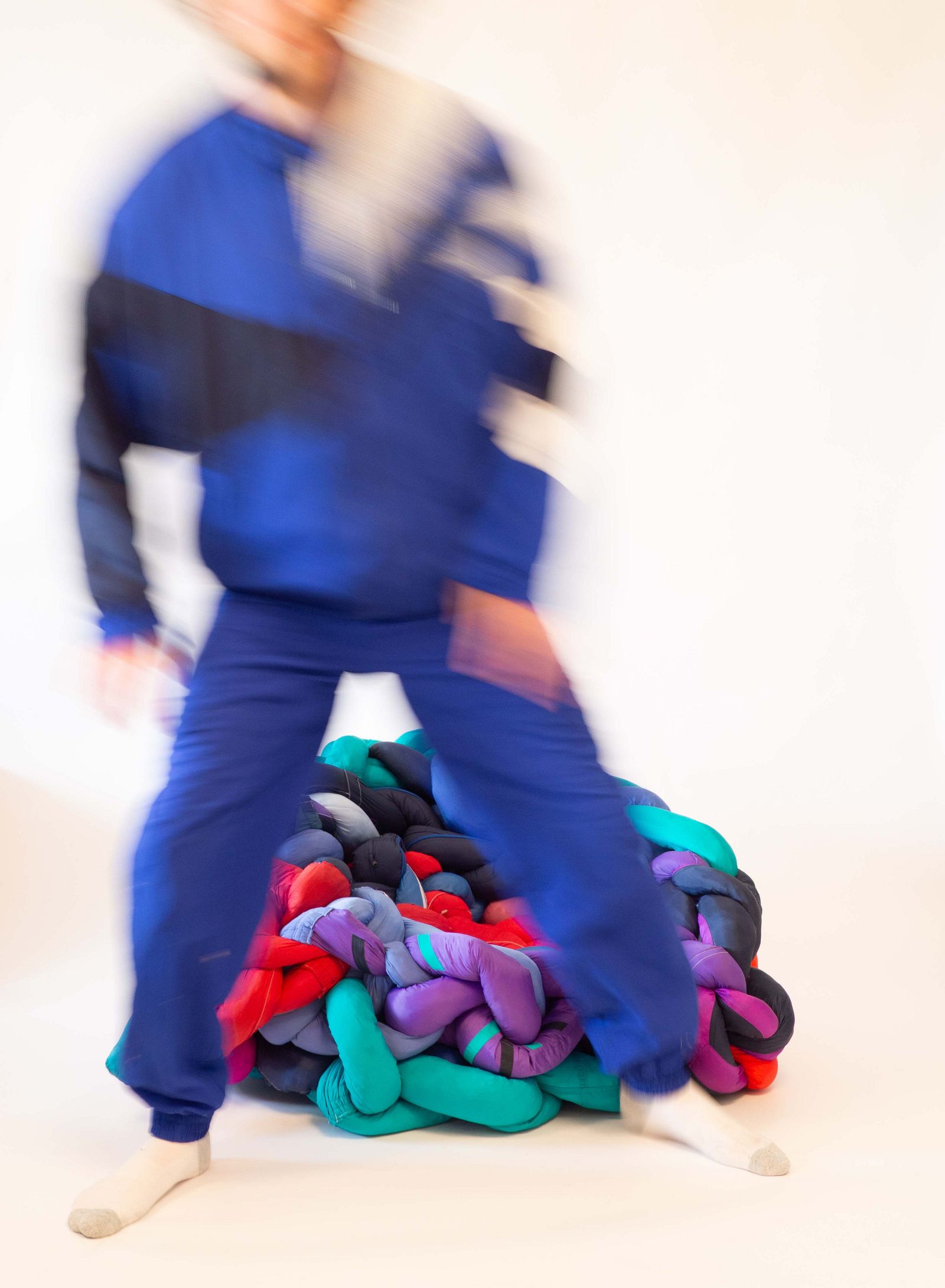
We all wear clothes—not only for comfort or coverage, but to express who we are, what we value, and how we wish to be seen. If clothing carries our identity, what traces of ourselves remain? Even when discarded, clothing holds memories of its former wearers—contaminations embedded in the fabric. Yet in today’s fast-paced fashion system, these very traces often make second-hand clothing undesirable—reducing it to ‘dead’stock.
Despite the efforts of the reuse and recycling industries, vast quantities of textiles still end up in landfills—often in environmentally damaging and socially unjust ways. As a designer with a deep love for clothing, I find this troubling. I am not seeking to "solve" the problem, but rather to reframe it—offering a new perspective and a positive, constructive approach for myself, the industry, and other designers.
This project builds on my earlier research, The Ghosts of Our Clothes, where I explored the second-hand clothing industry and its systems, as well as the subjectivity of reuse—how traces of us remain in garments and shape their afterlives. Through the lens of clothes, fictional stories tell parts of the research, with the intention to shift the perspective of how the hard data could be translated to the personal relations we engage in with our clothes. How memory, identity, and emotional value remain embedded in used garments—and how these lingering histories shape our perception of second-hand clothing.
As part of the research, Cirtex—a textile sorting center in Tiel—became a case study. The project focuses on its “category C” items—so-called deadstock—to reflect on our shared urgency around textile waste. Can this discarded material find new life in a new form, while keeping its history alive?
This collection emerges from broader material research, with each of the three objects representing a distinct deadstock stream: Utility (the unusable), Hygiene (the unworthy), and Relevance (the undesirable). Shredded textiles from I-did (a recycling company) are combined with techniques like braiding, knotting, and patchwork, preserving visible fragments of the original garments, keeping their material histories and embedded narratives alive.
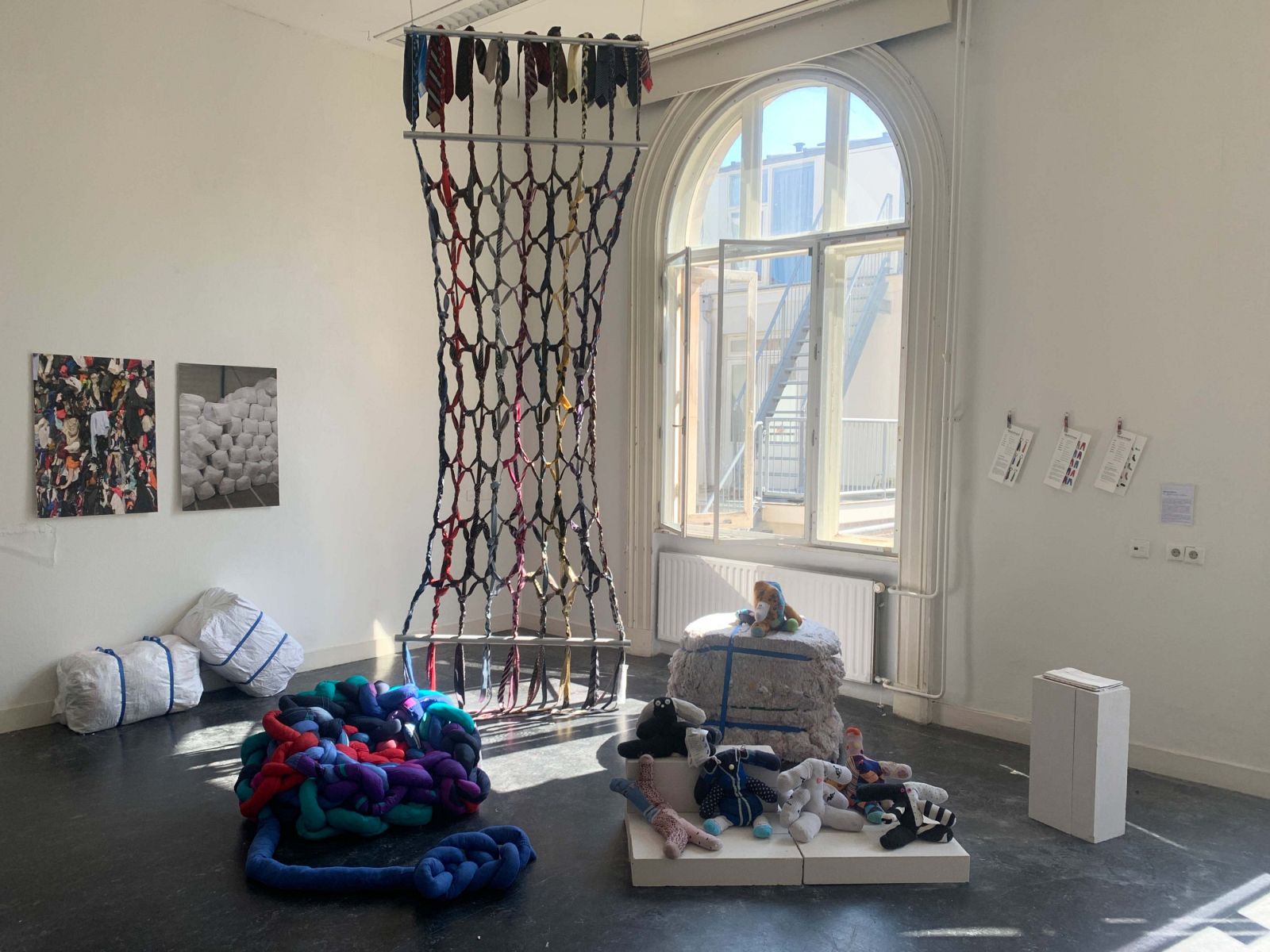

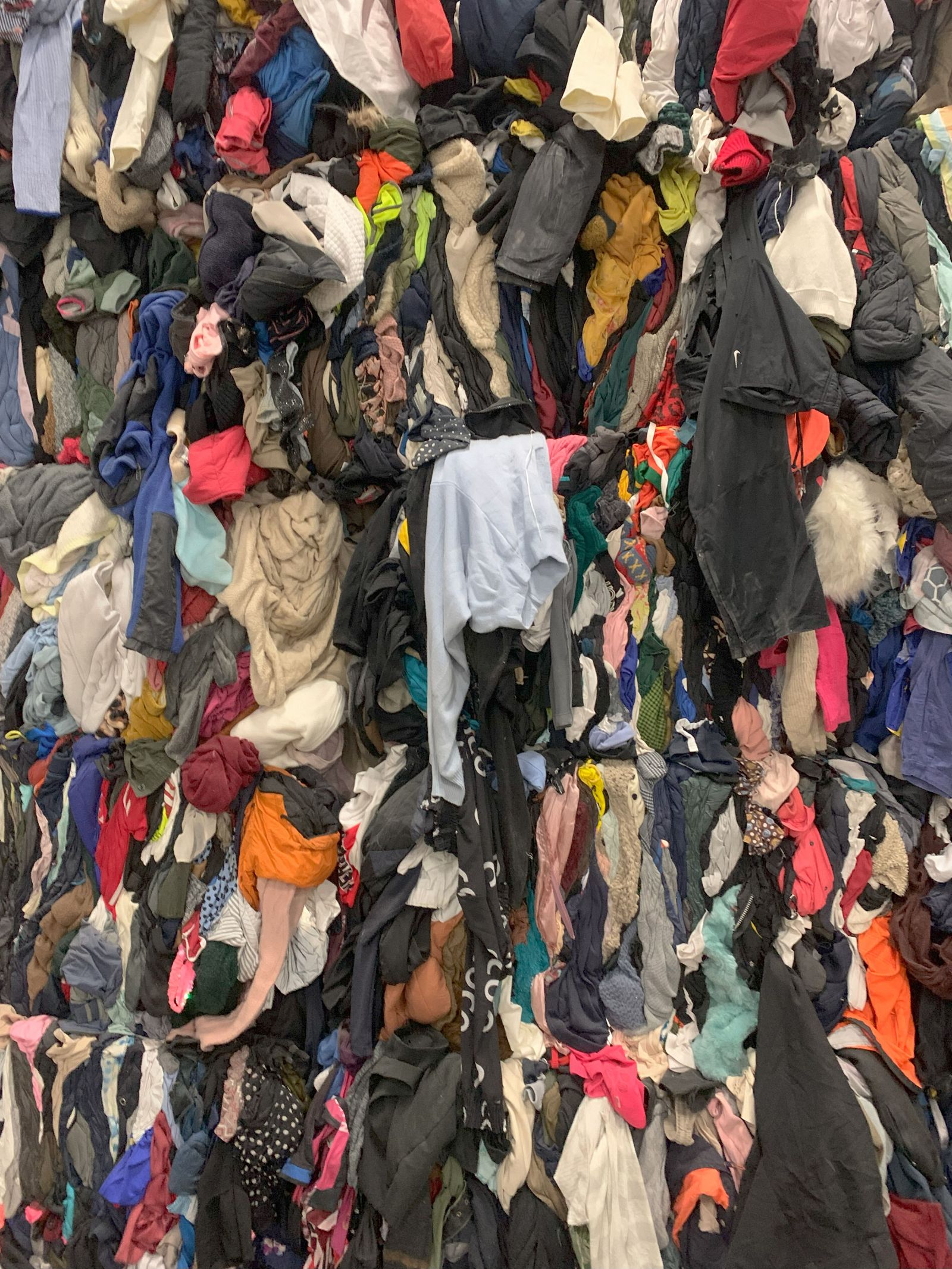
The project culminated in three designed objects, each representing a different narrative around deadstock:
CATEGORY: UTILITY
(the broken down, worn out, stained and ripped)
THE NOODLE
A soft, tubular structure made from the shell of discarded tracksuit pants, filled with shredded textile waste (supplied by i-did). The original garments' bright colors and recognizable features remain visible, carrying forward their past identity. The Noodle is a flexible, modular form that can be braided, knotted, or reshaped into various objects—chairs, couches, sculptural forms. It is both material and toolkit.
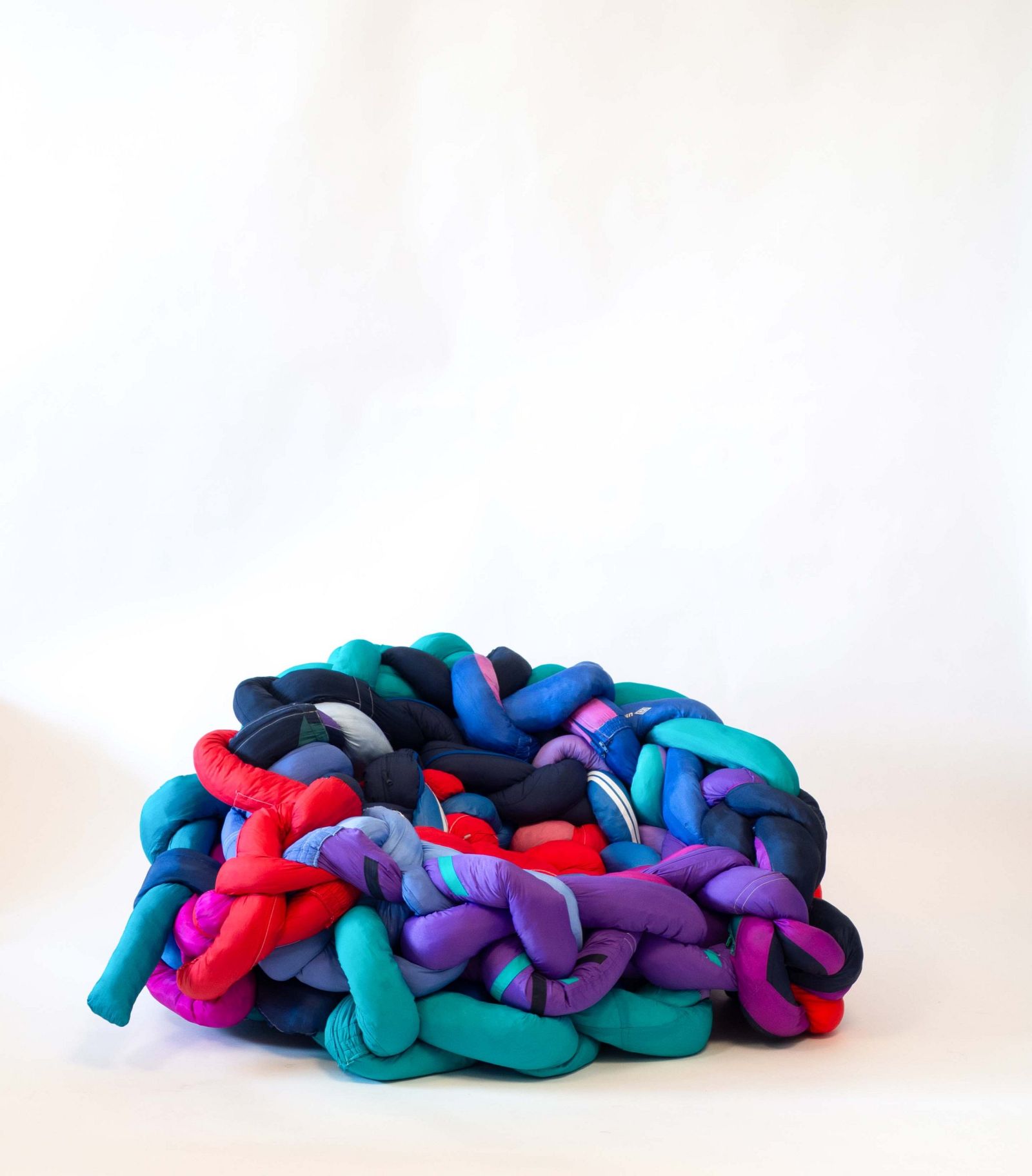
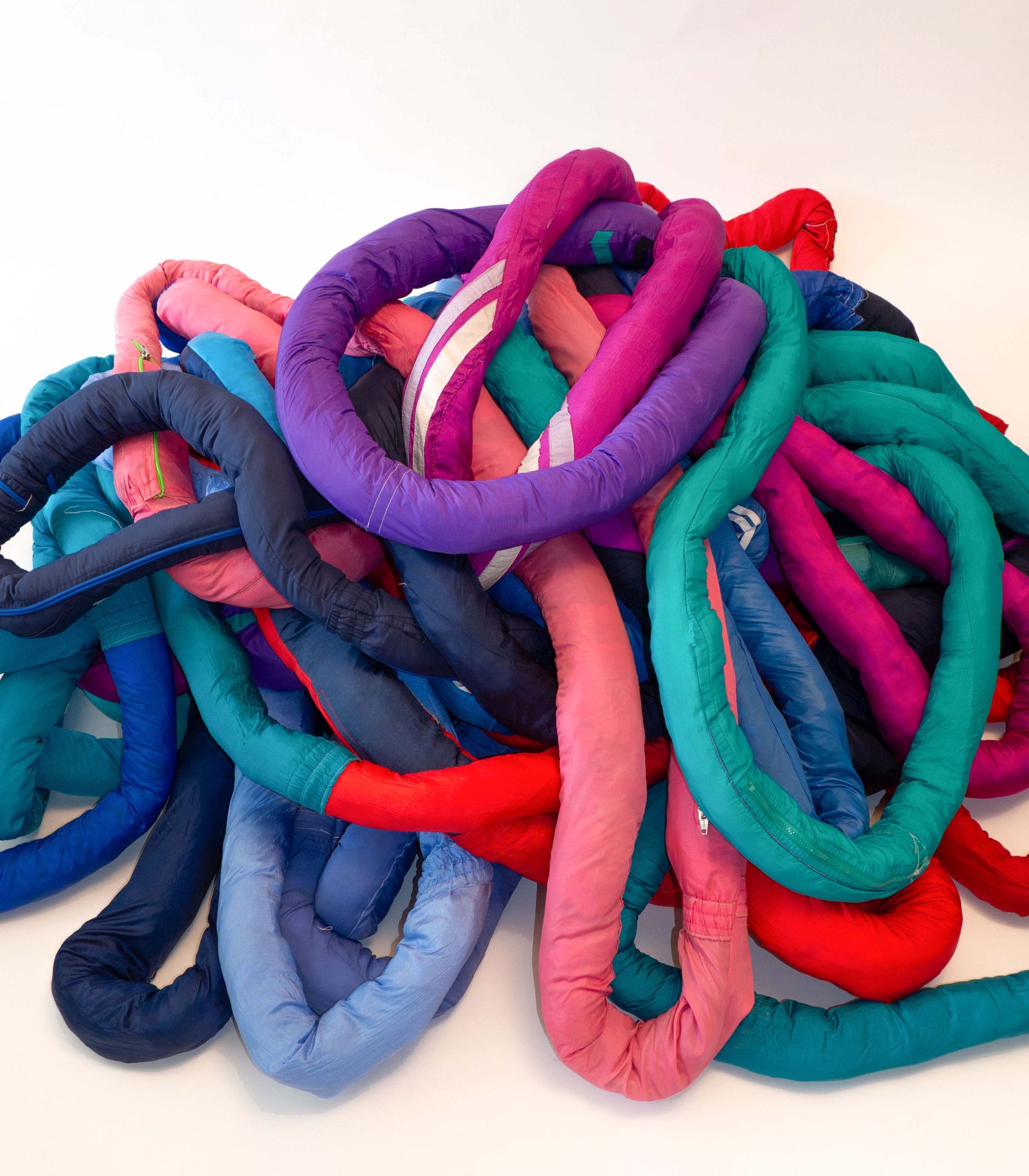
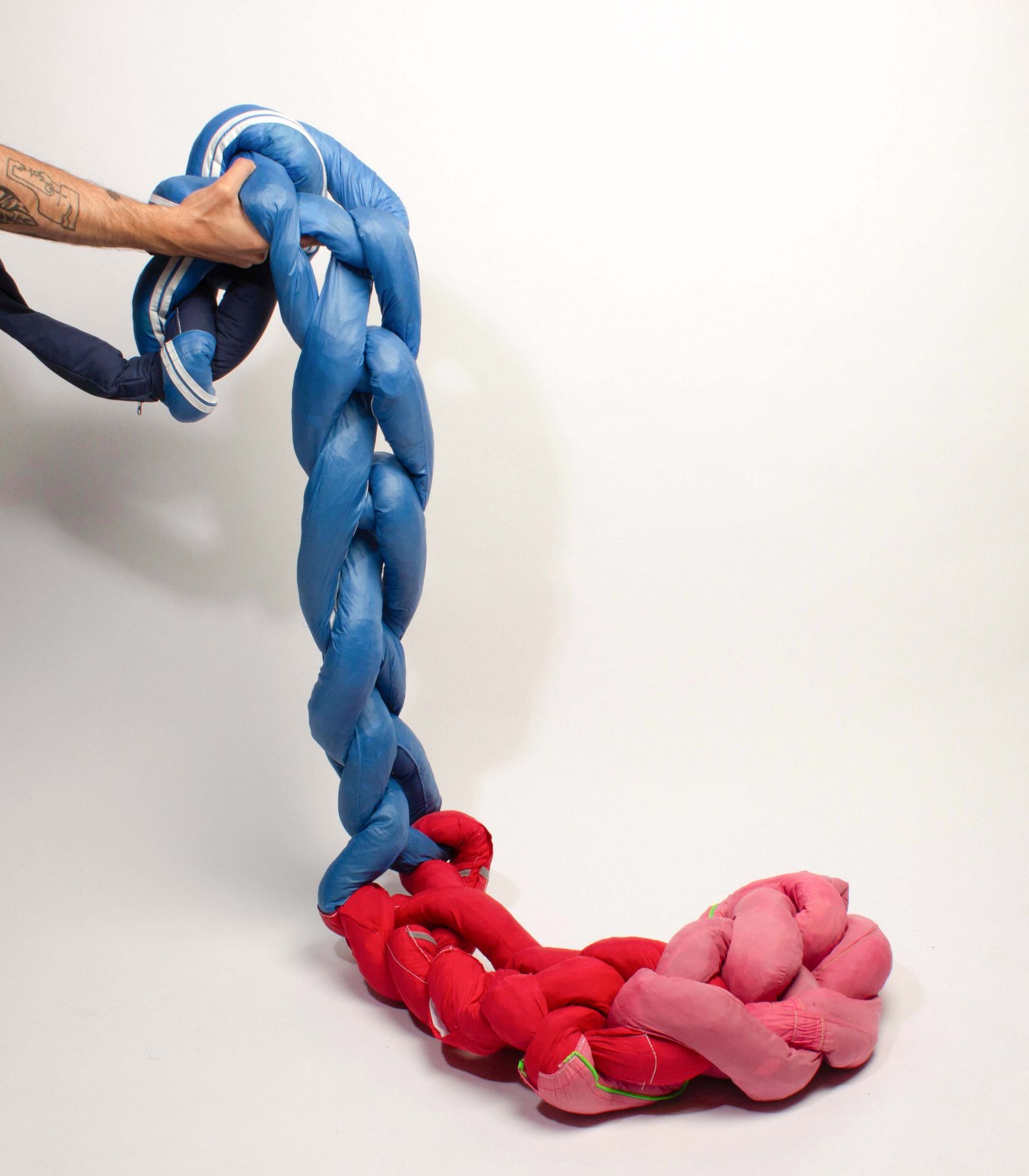
CATEGORY: RELEVANCE
(out-of-fashion, no reuse market, not popular, no destination to go to)
NECK TIED
Neckties, once symbols of status and professionalism, now flood sorting centers with no market for reuse. The Tied Net is a room divider woven from braided and knotted neckties. Their various patterns form a new collective textile—a mesh with both strength and flexibility. This structure could also be reimagined as a hammock, a swing, or a soft seating solution. For the graduation show, it was presented as a spatial divider—a threshold made from obsolete elegance.
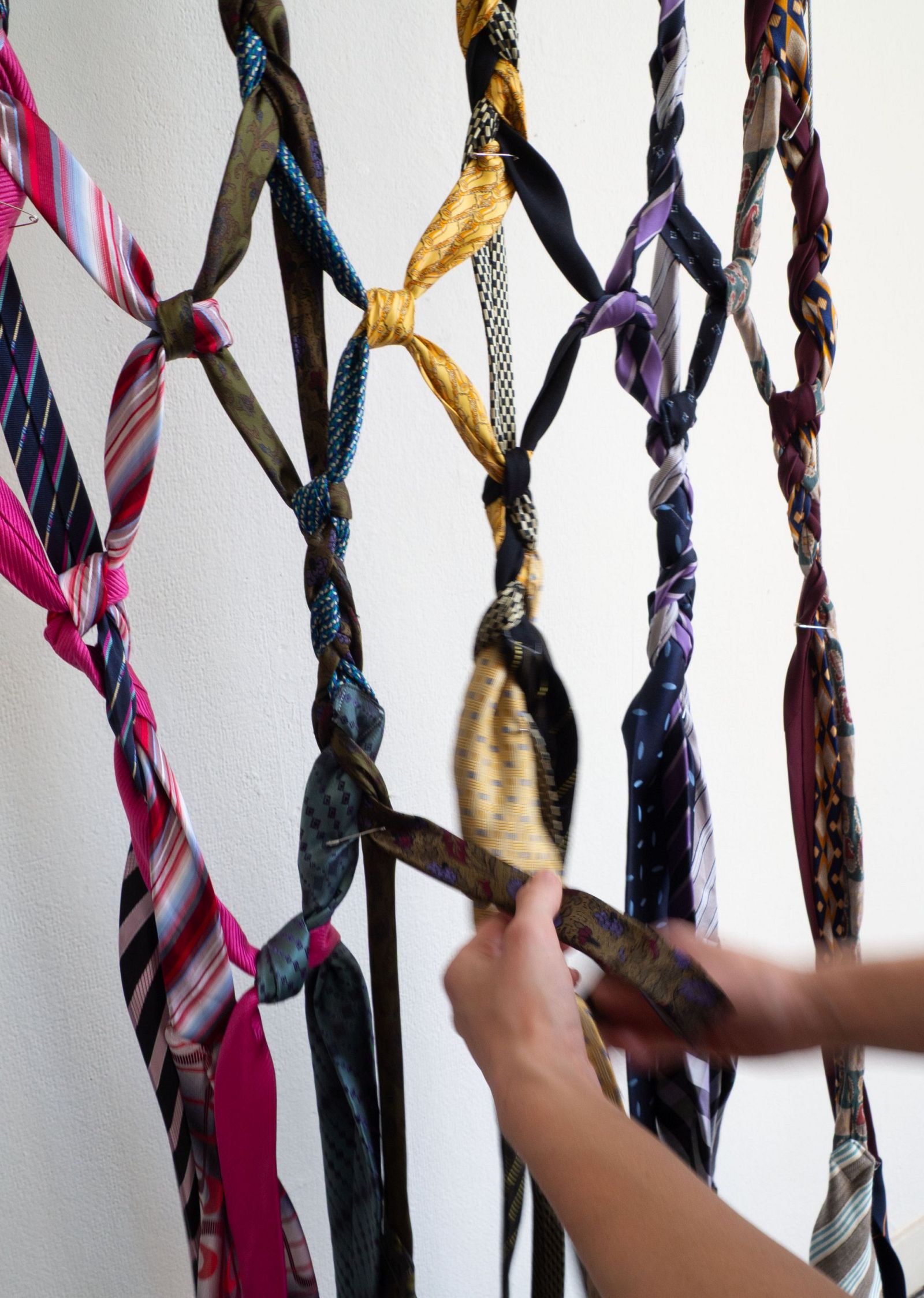
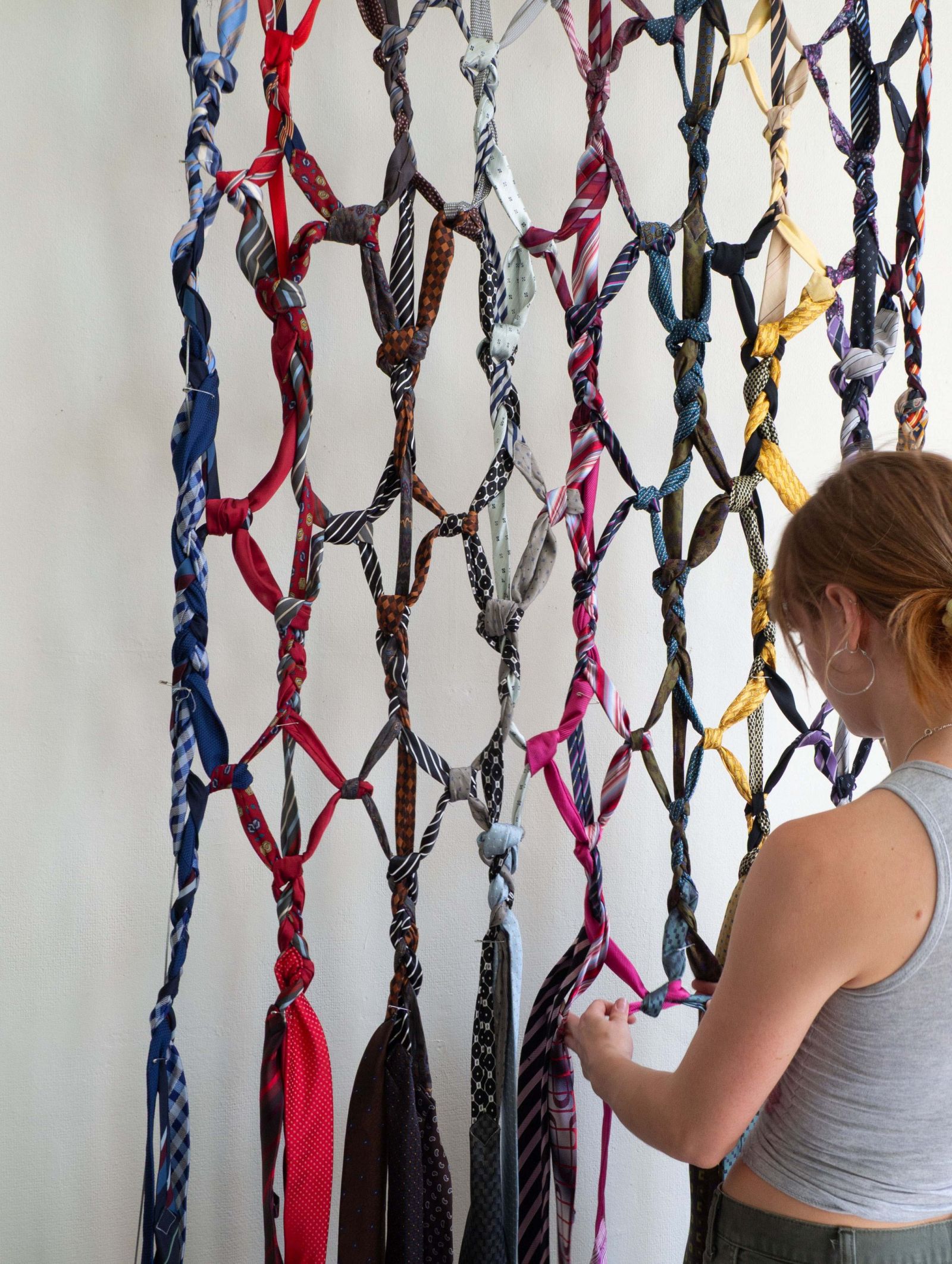
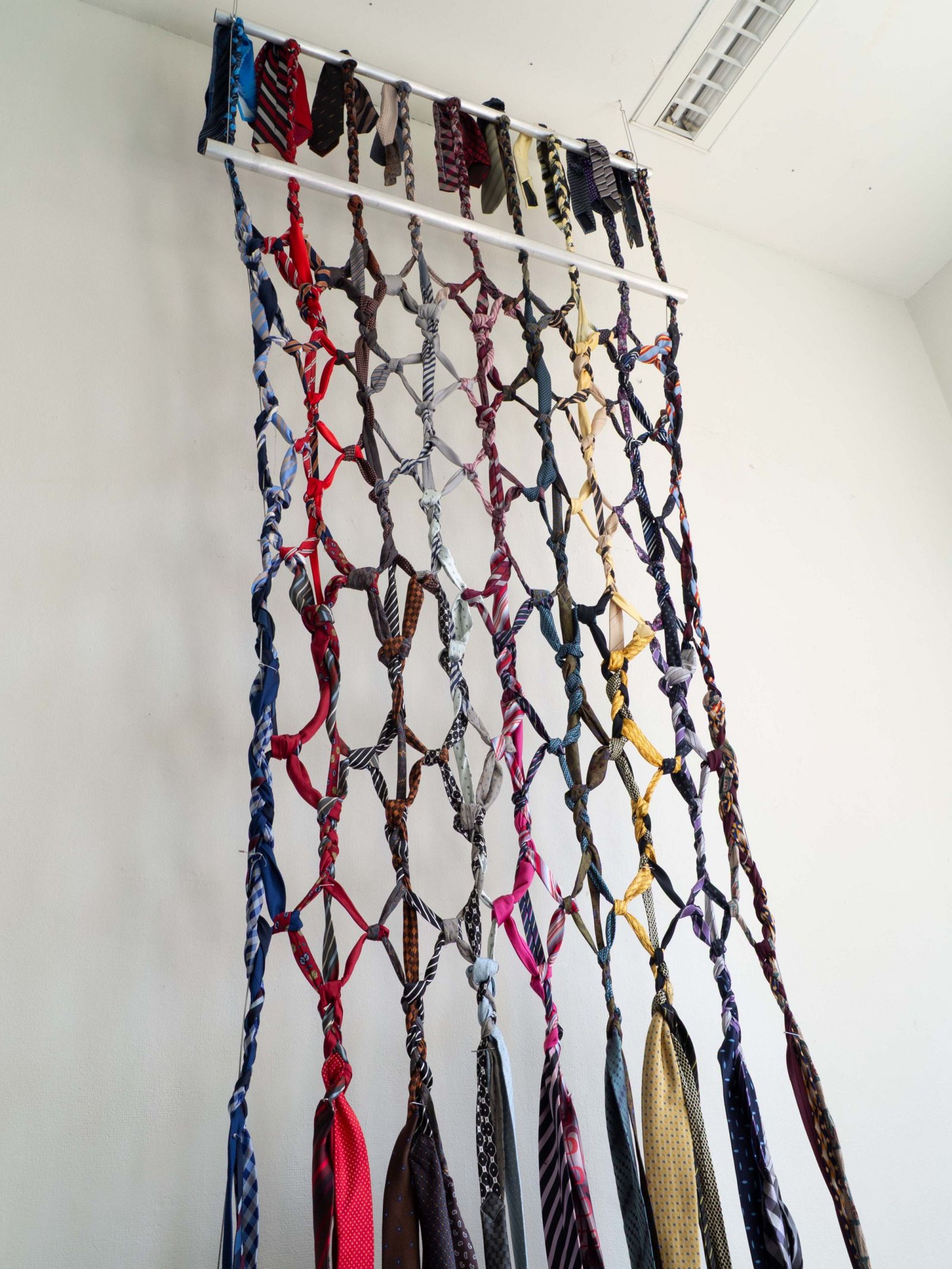
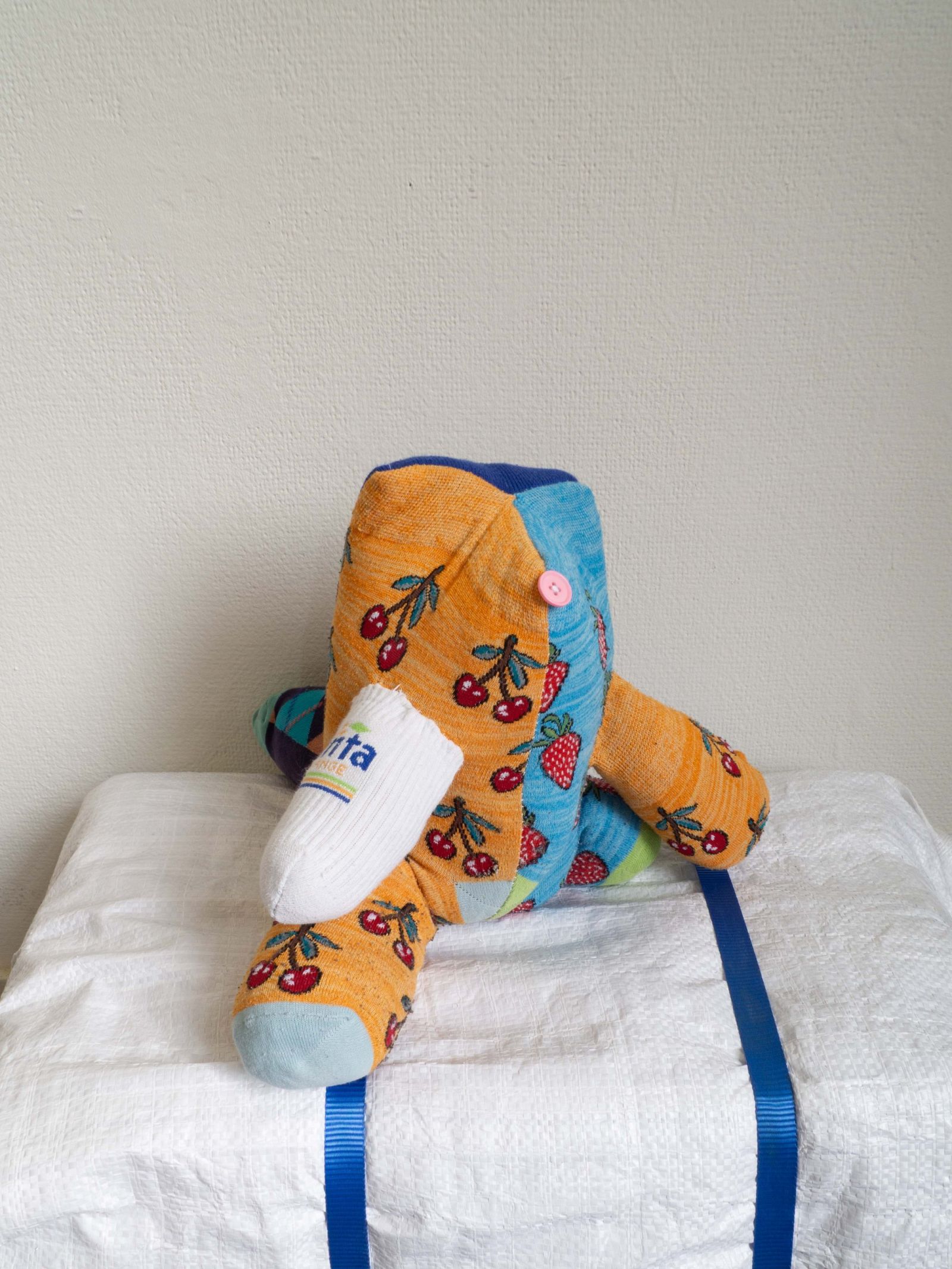
CATEGORY: HYGIENE
(the dirty, smelly, clean but with a context that is perceived as not clean)SOCKIES
Second-hand socks are among the most stigmatized items in textile waste, often discarded for hygiene reasons rather than actual condition. Sockies are small, soft creatures made from mismatched, old, or partnerless socks, donated by friends and family. Each has its own character, reflecting its origin.
Sockies are not a definitive product solution—they are designed to provoke discussion: What makes a material “dirty”? Why do we reject certain items based on their past use, regardless of their physical state?
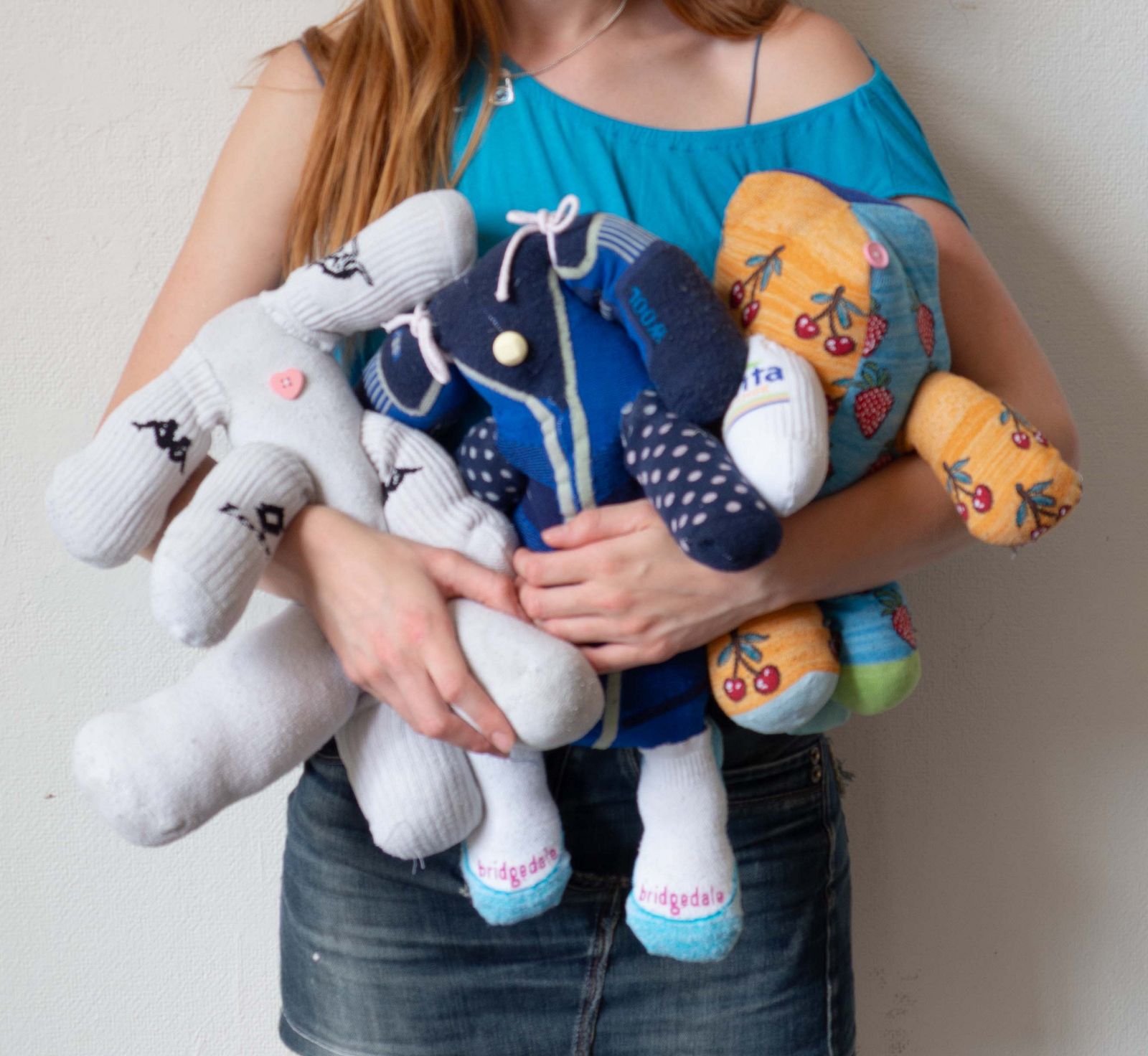
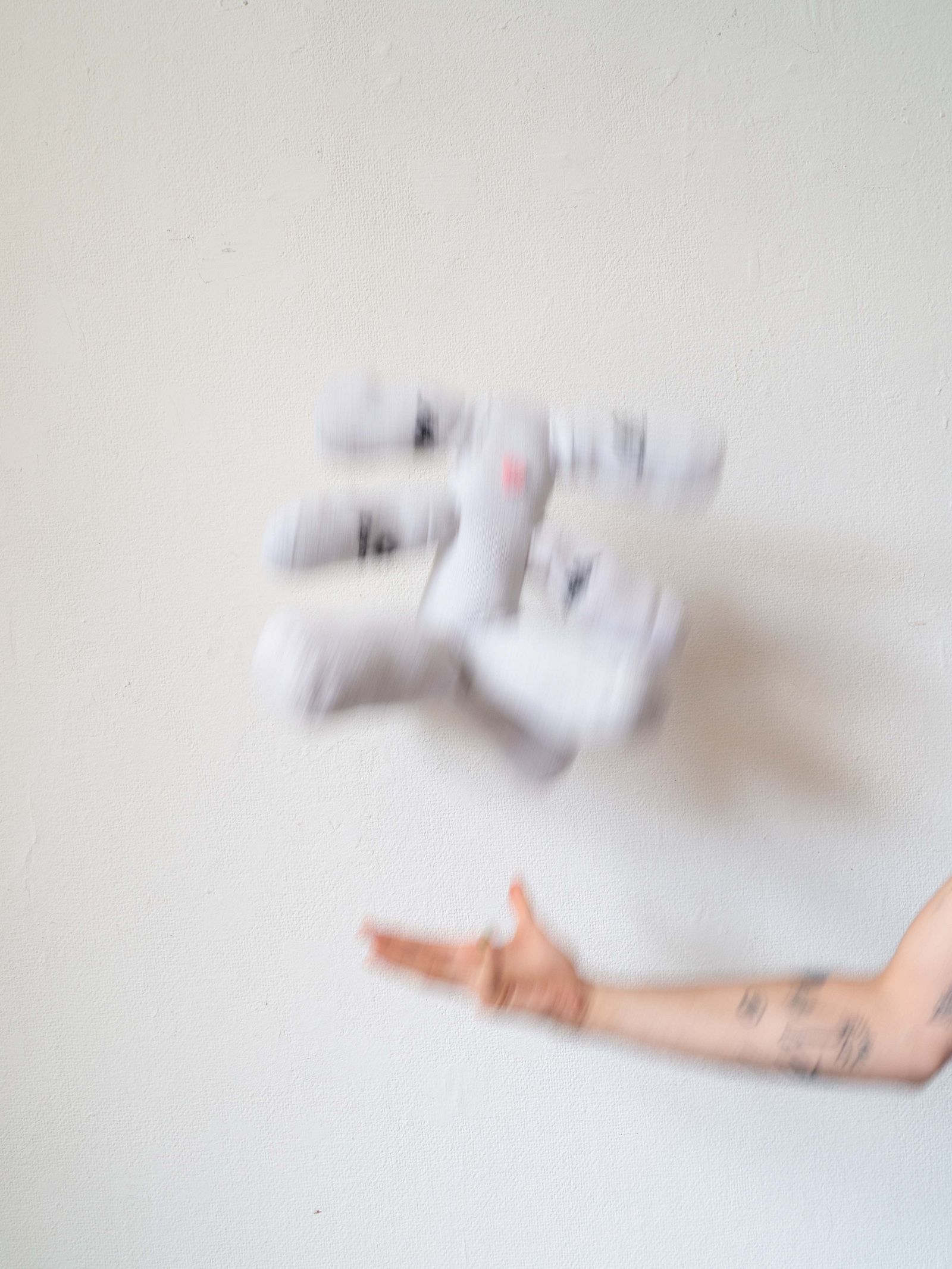
The project will be presented during Dutch Design Week, 16–27 October in Eindhoven.
Follow along for updates and behind-the-scenes insights — or come see the project in person at DDW!